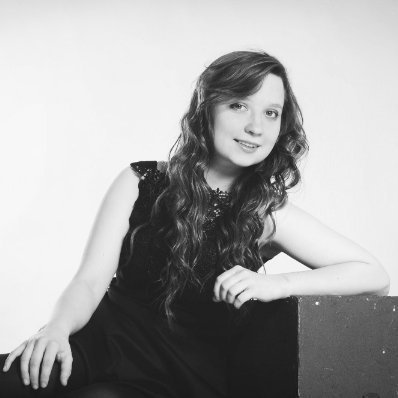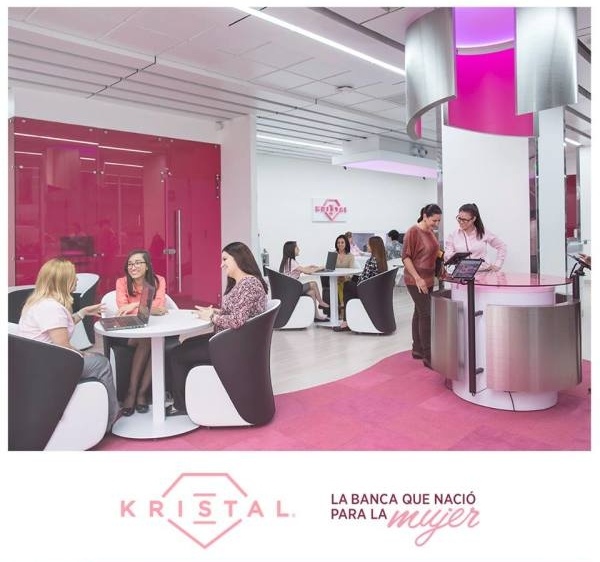Bridging the Gap: Connecting Banks and Women

- Vaida Pakulyte, Digital Marketing Manager at Strands
- 04.01.2017 07:30 am undisclosed
Consider the following statistics:
- Women make 89% of the banking decisions for their families.
- Just 20% of female breadwinners said they were "very well prepared" to make financial decisions, versus 45% of their male peers.
- Women will control two-thirds of the consumer wealth in the U.S. over the next decade and be the beneficiaries of the largest transference of wealth in US history.
Numbers speak for itself. On the opposite spectrum, there's still so called “data fortress” in the financial sector. There are whispers about how much treasure and insightful data it contains about marketing financial services to women, but few banks have understood it right and under-target women segment. What happened here? We decided to ask Gemma Cernuda and start connecting the disconnected.

ABOUT GEMMA
Gemma Cernuda is specialist of branding and communication for women. As a writer, international speaker and founder of Ellas Deciden, Gemma has helped companies tap into the female psyche and connect with women consumers. Gemma was selected as “Top 10 women in Spain” and has recently celebrated 15th anniversary of Peix&Co - the first ever agency of communication for women in Spain and Latin America.
Studies show that women influence up to 80% of household buying decisions worldwide but 73% of them report being unsatisfied with their banking services. What do you think are the main reasons?
First and foremost, women are unsatisfied because the companies “are built on masculine norms” and one-size-fits-all format. Developing products and services relying on male traits and values don't resonate with female consumers and leave them annoyed and exhausted. This is no one's fault, because banks simply lack data breakdowns by gender. In order to succeed in tapping the market for women's banking services, banks need to start collecting the data and change the way they communicate. That is the key to reach growing segment of women.
What does wealth represent for women and men?
Of course, some financial institutions may say that women’s financial needs are almost the same as men´s, making it easier to provide financial advice. The obvious truth is that women and men are both interested in having money, earning more and creating a stable financial balance, but women have a distinct set of values that shape their money management habits. Women associate wealth with security and economical stability, they are much more likely to look “at the bigger picture” of things: happiness of children, parents and their “second-half”. Family wellbeing comes first and then personal interest.
What do you think are the key differences between women and men when it comes to managing money and personal finances?
There is a lot of research saying that women differ substantially from men in how they relate to investing and money management overall. They do not want to hear about the growth or comparative performance of different funds, they want information about reaching their long-term goals, like putting a child through a college. They simply have a much greater disposition to care about the world around them. So the level of financial risk a women can take is also lower than men. Women are more likely to sacrifice potential upside in exchange for a lower risk - meaning focusing towards saving the money. According to research made by bcgperspectives, there are also certain times in women's lives when they are most in need of financial help - for example, opening first bank account, getting married, buying a home, starting a family, getting divorced. These are all major events with specific financial advice needed.
Last but not least, women also take decisions very differently than men. They take more time to think, consider various touch points of information, look for something that fits into their busy lifestyle. They need a conversation with brands and are looking to engage online and offline through conversations. If banks recognize and serve this need, they can easily get a loyal brand advocate who is much more willing to share positive experience and recommend service to others.
When it comes to marketing financial products & services to women, what aspects should we have in mind?
Just as women need financial products tailored to their needs, marketing strategies must also be tailored to this important customer segment. The first essential step is to improve the language. Each customer segment speaks their own language and communications need to be tailored. For example, the concept of financial product makes me suffocate. It does not resonate to me as a potential user of financial services. What's the real added value? How does it actually help me face financial challenges? This is what I want to know!
Transparency is another important element. It is more difficult to communicate and represents the overall brand values, but you would be surprised to know that women are willing to pay up to 7% more for a product that is linked to a social cause. Women have a greater focus on building deep relationships with a bank. Banks can leverage this trait to increase the awareness,.
Effective marketing coupled with a social message can establish every financial institution as the “brand of choice” among female segment and lead to trust.
How should the message be changed to the traditional way of communicating about financial products?
The message needs to include empathy and emotions. That doesn't necessarily mean adding a pink colour, explicit phrases like “bank for women” or other obvious connotations targeting female segment. The message needs to appeal to the beliefs and values of women in a more subtle way.
There are already banks addressing women and experimenting with messaging. For example, Kristal - a bank created for women believes they finally represent the needs of every female by having pink walls, cushioned swivel chairs, shiny white tables and free purses as gifts for loyal customers. Instead of questioning the status quo of stereotypes, the bank promotes the most traditional norms.

The real bank for women should praise authenticity, provide financial literacy advice, use female-friendly language, make women feel smart, not framed in stereotypes. It's essential to have women´s interests & values in mind when developing financial services and make it relevant for both women and men.
When you talk about adapting the message and addressing the audience in a more feminine way, do people criticize it as being feminist, which lately has a negative connotation?
That´s a very defensive reaction. Whenever there is a feminine aspect discussed, it has a negative connotation simply because it´s not a frequently addressed topic. Especially the older generations have many prejudices and the only way to go over it is to change the mental chip - to create messages addressing both genders, justified by tailored data-driven analysis.
What kind of tools or services do you think banks can offer to better satisfy women’s needs and help them manage their finances?
Banks really need a better attention to their female clients - that's the moment of truth for everyone and the most direct contact between the bank and the user. If the accessibility is simple, easy, effective and enjoyable, the experience of a customer will also be positive. It can be the trigger for recommending the bank or not.
Women need recognition too. Research shows that women place very high value on being treated with respect as business people and they they view their banking business beyond just transactional terms. They need advisors who understand their need for simplicity and long-term stability.





















